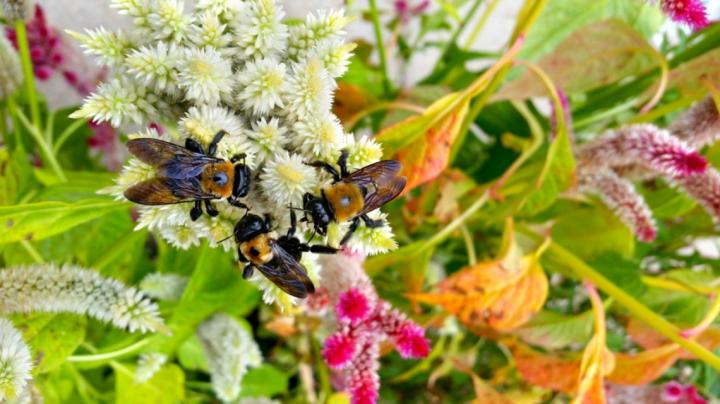
Credit: Paige Muñiz
ITHACA, N.Y. – One in 11 flowers carries disease-causing parasites known to contribute to bee declines, according to a Cornell University study that identifies how flowers act as hubs for transmitting diseases to bees and other pollinators.
The study, published July 20 in Nature Ecology and Evolution, also found that one in eight individual bees had at least one parasite.
The study was conducted in field sites in upstate New York, where the researchers screened 2,624 flowers from 89 species and 2,672 bees from 110 species for bee parasites through an entire growing season. They used molecular data to identify five common protozoan (free-living, single-celled) and fungal parasites.
“We know very little about transmission of these diseases,” said senior author Scott McArt, assistant professor of entomology in the College of Agriculture and Life Sciences. “Our study shows that transmission can likely occur on a lot of different flowers, and the amount of disease in a community is shaped by both the floral community and the bee community.”
The researchers found three main factors – flower abundance, numbers of social bees and bee diversity – played roles in disease transmission.
As the season progresses, the number of flowers goes up. For example, in the fall, flower-laden goldenrod dominates many New York fields. At the same time, the proportion of flowers with parasites goes down, lowering the risk that a bee will pick up a parasite when it visits a flower.
“That has really important conservation implications, because if you want to limit disease spread, just plant a lot of flowers,” said McArt, adding that planting flowers also provides food for pollinators. “It’s a win-win: If we plant flowers and create a lot of forage, we can also dilute disease.”
The study revealed that social bees, such as honeybees and bumblebees, were more likely to be infected with parasites than solitary bee species. The researchers found that later in the season, the number of social bees increases, while bee diversity overall decreases.
And as a general rule, diversity of species lowers the spread of disease.
“Both bee diversity and fewer of the social bees make it less likely for bees [overall] to be infected. That’s another win for conservation: if we promote bee diversity, there will be less disease,” McArt said. High numbers of infections in the social species may also spill over to infect other species, he said.
Future studies will try to determine whether increased flower abundance cancels out the negative effects of increased numbers of social bees combined with lower overall bee diversity later in the summer.
More study is also needed to understand why social bees are so susceptible to parasites, whether they lack defenses and if they are sharing disease in close colony quarters.
###
The research is funded through a five year, $2.2 million National Institutes of Health grant to understand the spread of pathogens that infect bees.
Peter Graystock, a former postdoctoral researcher, and Wee Hao Ng, a postdoctoral researcher, both in McArt’s lab, are co-first authors of the study. Paige Muñiz, McArt’s lab manager and an expert bee taxonomist, is a co-author.
Media Contact
Lindsey Hadlock
[email protected]
Original Source
https:/
Related Journal Article
http://dx.




